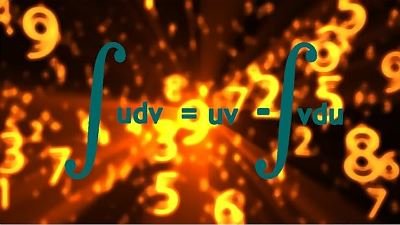Integration by parts is a mathematical techniques to solve integrals that are composite of two or more functions.
Often in mathematics, a function can be as a result of two functions. For example
- y1=3x+2 and
- y2=5x-7
If we multiply y1 and y2, the product is a function that is a composite of two functions. that is :
y1y2 = (3x+2)(5x-7)=15x2-11x-14
consider the function y = cos x and g = 4x2
A composite function would be created from the two by the function:
yg=4x2cosx
General expressions of Integration by parts
let the function y=UV. We start by expressing the partial derivative of the function UV.
if U and V are both functions of x, the the derivative of UV will be given by.
we make V(du/dx) the subject:
Integrating the new expression:
integrating UV and rearranging:
then:
When working with partial integrals, we must choose what will be U. We also decide which function should be V. Our choice determines ease with which solve the function. Wrong choice of U and V can make it difficult to solve the problem. The following order should be observed.
- Logarithmic function (L)
- Inverse function (I)
- Algebraic function(A)
- Trigonometric function(T)
- Exponential function(E)
- constant(C)
The letters in the brackets can be combined to make the acronym LIATEC that can help us remember the order.
Example questions on Integrating by parts
- solve
Solution
The integral is a product of two functions and so integration by parts could the best strategy
let u = x and V = ex
similarly;
now consider the general integral:
we substitute both the function and their derivatives in the integral respectively:
hence:
Example 2
solution
we let u = x and v= sin x
substituting in the general integral:
but
hence:
Example 3
solution
in the order of LIATEC, we let the logarithmic function be substituted on u of the general integration by parts.
u = lnx and dv = x2dx
if dv = x2dx, then:
hence:
Example 4
4.
solution
let u = cosx
dv = exdx
du = -sinx dx
you can see that the integration above has produced another integral that need to be integrated by part. we have named the first results of the integration as equation (i)
consider the integral in the result:
we let :
u = sinx
dv = exdx
u = cosx dx
v = ex
substituting (ii) in (i):
we add the integral on the right on both sides of the equation so that we have:
hence the integral to the right vanishes and we have
Example 5
solution
u= lnx
dv = dx
v = x
substituting in the general integral by parts:
Example 6
solution
let u = tan-1 x and dv = dx
substituting in the general integral:
looking inside the integral on the right hand side:
Therefore:
Therefore:
summary Remarks
Integration by parts is a technique used to solve integrals, particularly when the integrand is a product of two functions. It’s based on the product rule for differentiation and is derived from the following formula
Related pages
- Integrating quadratic polynomials
- Trigonometric substitutions: concise approach
- Basic Integration rules
- The fundamental theorem of calculus


Leave a Reply